You’ll discover how to transform your living room into a stunning botanical sanctuary with these nine innovative plant decoration ideas. From creating dramatic focal points with 6-foot-tall Fiddle Leaf Figs to designing intimate spaces with cascading pothos vines, each approach offers a unique way to incorporate nature into your home. These proven techniques blend form and function, helping you maximize both visual impact and plant health in spaces of any size.
Contents
- 1 Create a Botanical Corner With Statement Plants
- 2 Embrace Vertical Green With Living Walls
- 3 Mix Plant Heights for Dynamic Impact
- 4 Style Your Window Sills With Sun-Loving Varieties
- 5 Incorporate Plants Into Shelving Displays
- 6 Design a Tropical Paradise With Large-Leaf Species
- 7 Master the Art of Plant Clustering
- 8 Transform Coffee Tables With Miniature Gardens
- 9 Float Your Foliage With Hanging Planters
Create a Botanical Corner With Statement Plants
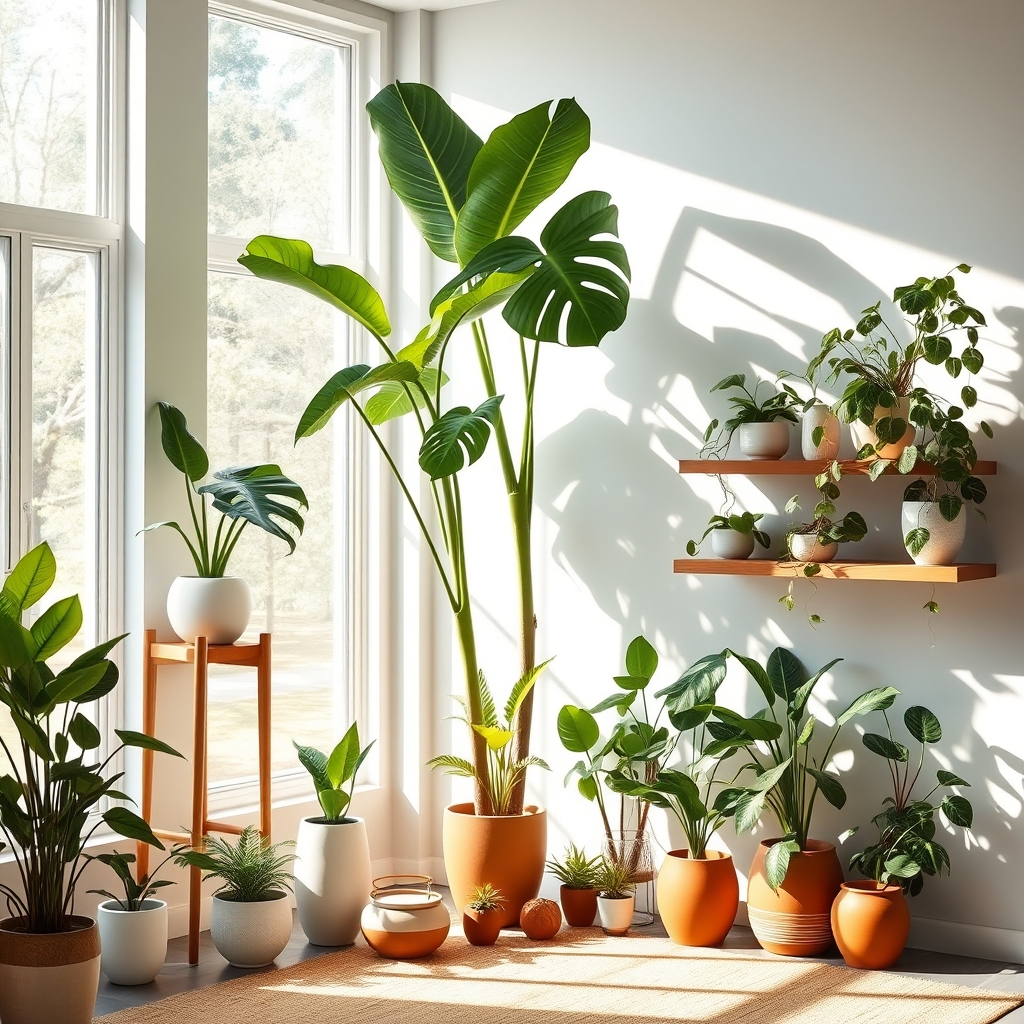
A botanical corner transforms an unused living room space into a striking green sanctuary using statement plants of varying heights and sizes.
Tall floor plants like Fiddle Leaf Figs, Bird of Paradise, or Monstera Deliciosa serve as anchor pieces, while medium-sized plants on stands or shelves create visual layers.
Smaller plants and trailing varieties can occupy side tables or hang from the ceiling, completing the multi-level display.
This arrangement typically occupies a corner near natural light, often incorporating elements like decorative pots, natural wood stands, and woven baskets to enhance the organic aesthetic.
The corner becomes a focal point that adds depth, texture, and natural drama to the room while maintaining a cohesive, curated appearance.
Embrace Vertical Green With Living Walls
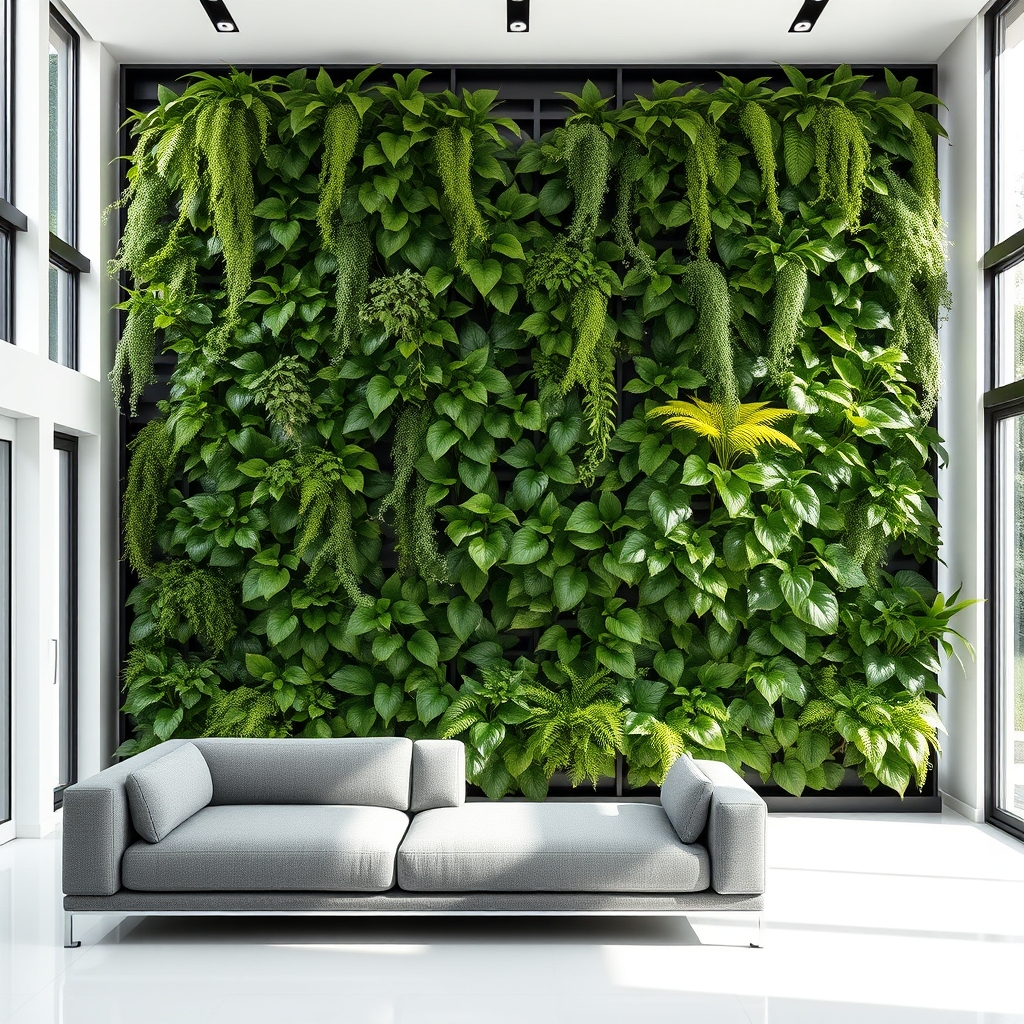
Living walls transform vertical spaces into lush, garden-like displays by mounting plants directly onto wall surfaces.
These installations feature a mix of different plant species arranged in modular panels or pocket systems, creating a dramatic tapestry of foliage.
The unique feature of living walls is their space-efficient design, allowing homeowners to incorporate substantial greenery without sacrificing floor space.
Plants are typically supported by built-in irrigation systems and growing mediums, while strategic lighting ensures proper growth.
Common choices for living walls include ferns, pothos, philodendrons, and other low-maintenance indoor varieties that can thrive in vertical arrangements.
The end result is a striking architectural element that doubles as a natural air purifier and focal point in the living room.
Mix Plant Heights for Dynamic Impact

Mixing plant heights creates visual interest and depth in living room spaces by combining tall, medium, and low-growing plants.
Floor-standing specimens like fiddle leaf figs or bird of paradise provide dramatic vertical elements, while tabletop plants like pothos or peace lilies occupy the middle ground.
Low-profile plants such as succulent arrangements or trailing ivy can adorn coffee tables or hang from shelves.
This layered approach draws the eye through different levels of the room, establishing a natural, garden-like atmosphere while maximizing the use of available space.
The varied heights also help to soften architectural lines and create organic movement throughout the living area.
Style Your Window Sills With Sun-Loving Varieties
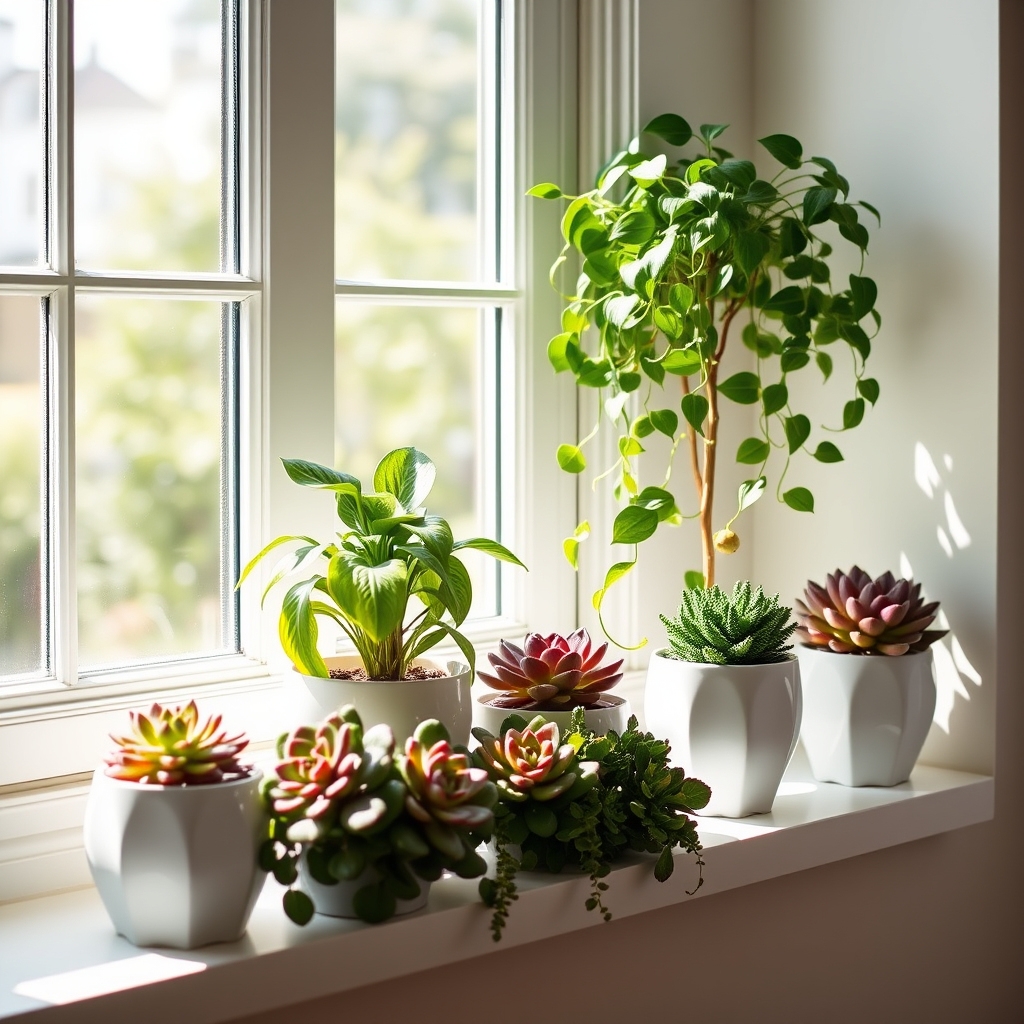
Sun-loving plants arranged along window sills create an elegant natural display while maximizing available natural light.
Succulents, cacti, and small tropical plants can be positioned in decorative pots of varying heights and sizes, creating visual interest through layering.
Window sill arrangements work particularly well with compact plants that don’t obstruct views or interfere with window operation.
Popular choices include snake plants, pothos, African violets, and small herbs, which thrive in the direct sunlight while adding a refreshing touch of greenery to the living space.
The window sill placement allows plants to serve as a living curtain element while ensuring they receive optimal light exposure for healthy growth.
Incorporate Plants Into Shelving Displays

Incorporating plants into shelving displays creates dynamic, layered arrangements that combine decorative items with natural elements.
Plants can be positioned between books, artwork, and collectibles on floating shelves, bookcases, or ladder shelves to add depth and organic texture. Trailing plants like pothos or ivy can cascade down shelf edges, while compact specimens like succulents and air plants fit neatly on individual shelves.
The arrangement works particularly well with different shelf heights and depths, allowing for varied plant sizes and creating visual interest through elevation changes. This styling approach maximizes vertical space while keeping floor space clear, and allows for easy adjustment of plant placement based on light requirements and aesthetic preferences.
Design a Tropical Paradise With Large-Leaf Species
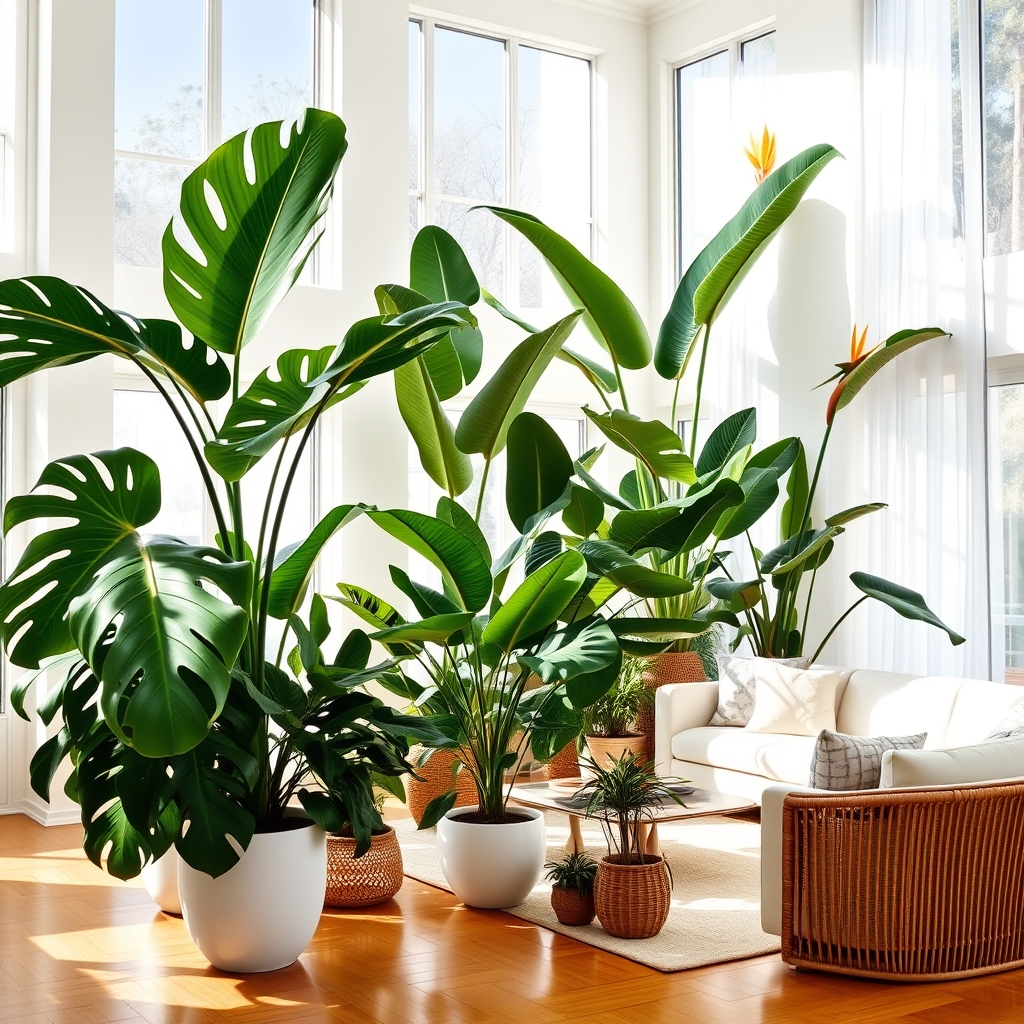
Creating a tropical paradise with large-leaf species transforms living rooms into lush, exotic spaces through the strategic placement of dramatic foliage plants. These species typically feature broad, glossy leaves that create bold architectural statements and cast interesting shadows throughout the room.
Key distinctive plants include Monstera deliciosa with its iconic split leaves, Bird of Paradise with paddle-shaped foliage, and Elephant Ear plants featuring massive heart-shaped leaves. These specimens naturally draw the eye upward and fill vertical spaces effectively.
The arrangement works best when plants are grouped at varying heights, with taller specimens placed in corners or behind furniture, and shorter ones positioned as transitional elements. The large leaves create a natural cooling effect and contribute to a vacation-like atmosphere while requiring minimal maintenance beyond regular watering and occasional dusting.
This design approach particularly suits rooms with moderate to bright indirect light and higher humidity levels, characteristic of tropical environments.
The oversized foliage provides dramatic impact even with just a few carefully chosen specimens.
Master the Art of Plant Clustering
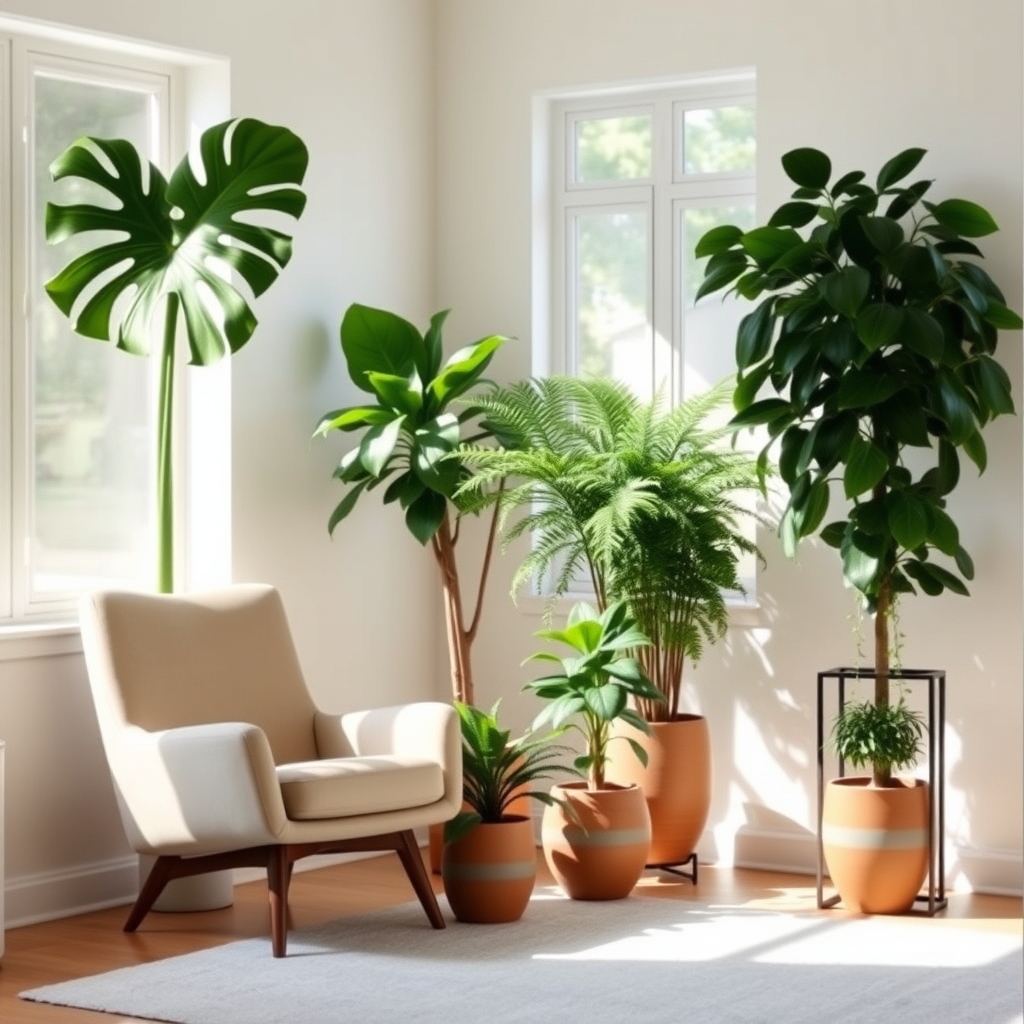
Plant clustering is a decorative technique that involves grouping multiple plants of varying heights, textures, and sizes together to create visually striking arrangements in living spaces.
Plants are positioned in odd numbers (typically three, five, or seven) and arranged with taller specimens in the back, medium-height plants in the middle, and shorter varieties in the front. This creates a natural, layered look that draws the eye and adds depth to room corners or empty spaces.
The arrangement typically incorporates different leaf shapes, colors, and growth patterns to maintain visual interest. For example, combining upright plants like snake plants with trailing pothos and bushy ferns.
Pots and containers are often coordinated in style or color to maintain cohesion while varying in size to complement the plants’ proportions.
Key features:
- Grouped in odd numbers
- Varied heights and textures
- Coordinated containers
- Layered arrangement
- Mixed foliage types
- Strategic spacing between plants
- Balanced composition
Transform Coffee Tables With Miniature Gardens
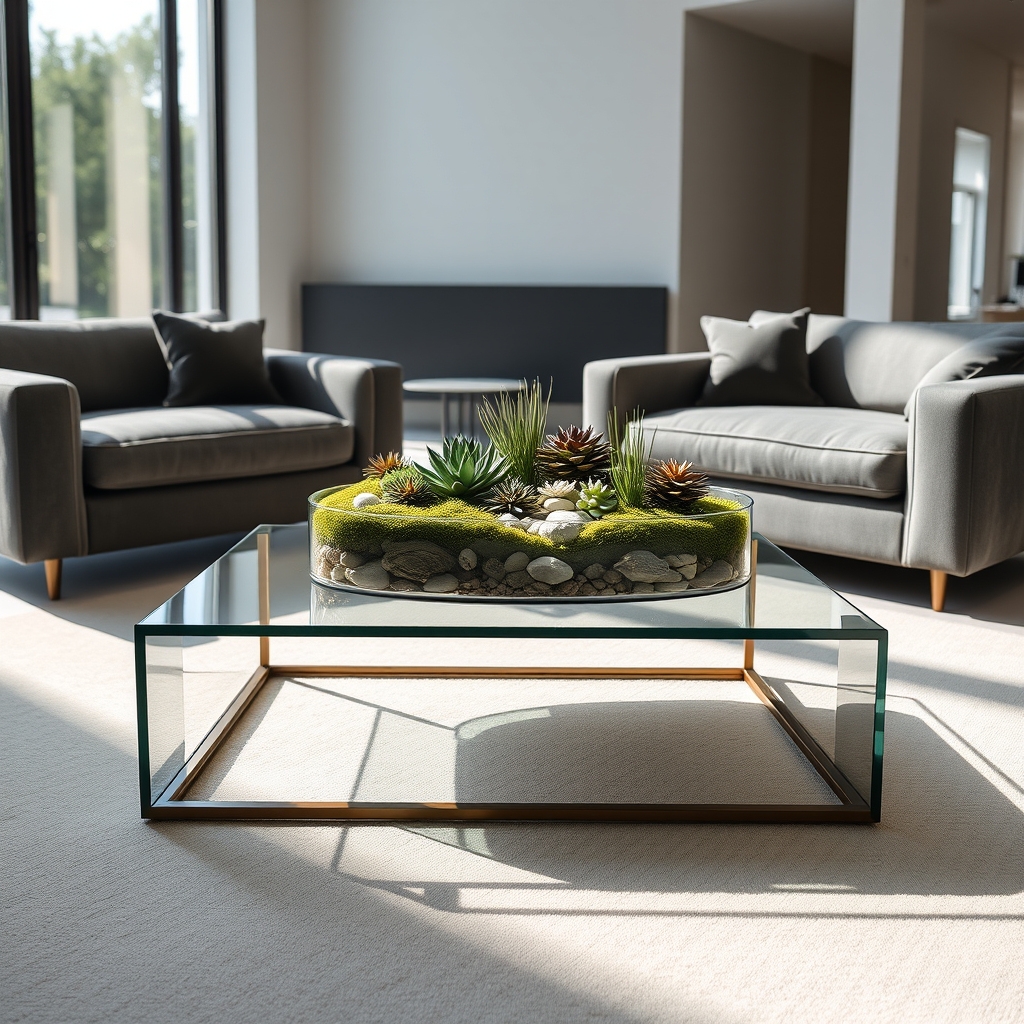
Miniature gardens on coffee tables create captivating focal points in living rooms by incorporating small-scale landscapes within contained spaces.
These decorative arrangements typically feature tiny succulents, moss, small flowering plants, or air plants arranged in shallow containers or terrariums. The gardens can include miniature accessories like pebbles, driftwood, or decorative stones to create depth and visual interest.
Coffee table gardens work particularly well in modern settings when styled in geometric containers or vintage spaces when displayed in repurposed vessels. The compact size makes them perfect for tight spaces while still providing the benefits of living greenery without overwhelming the room’s layout.
Float Your Foliage With Hanging Planters
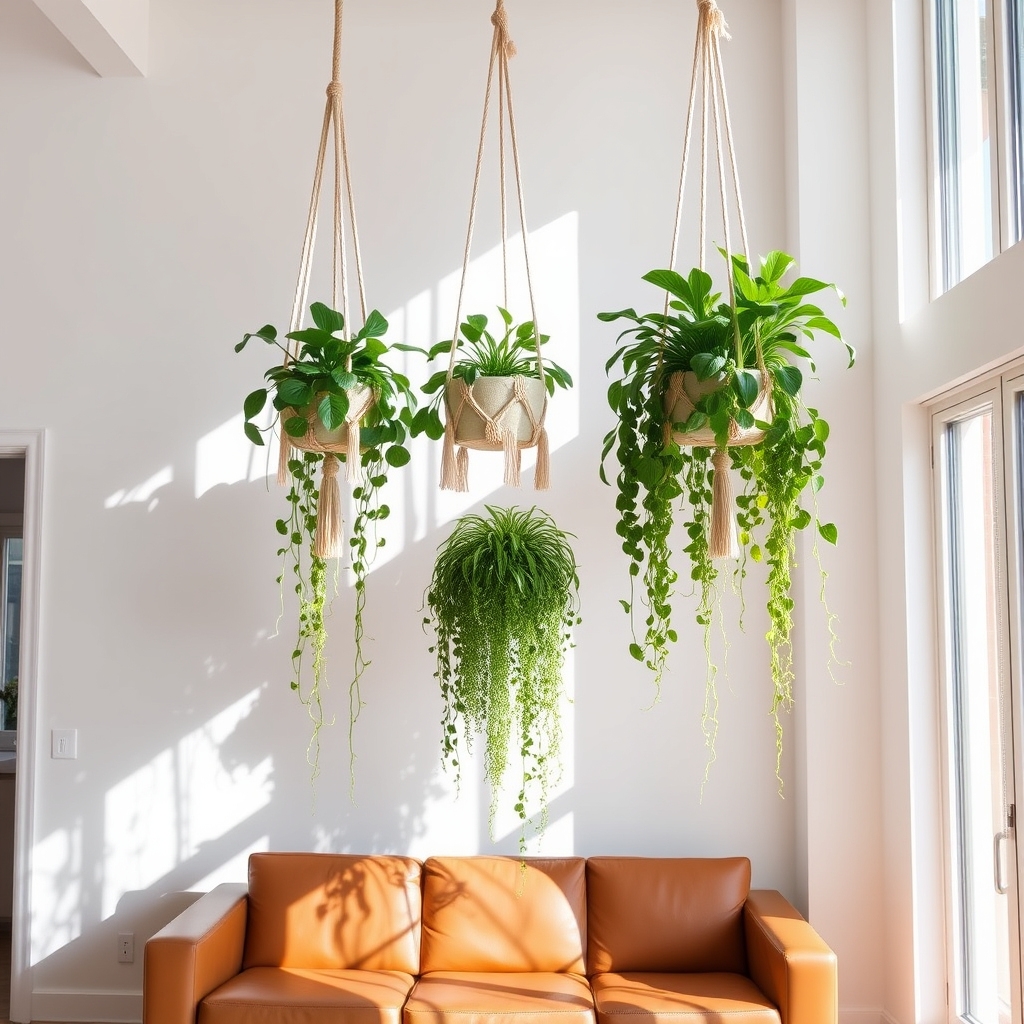
Hanging planters create a dynamic vertical element in living rooms by suspending plants from the ceiling or wall-mounted brackets. These elevated displays feature plants in decorative containers that dangle at various heights, drawing the eye upward and maximizing floor space.
The planters can be made from materials like macramé, ceramic, metal, or woven baskets, often secured with sturdy chains, ropes, or leather straps. Trailing plants like pothos, spider plants, or string of pearls are particularly effective in hanging planters, as their cascading foliage creates a waterfall effect.
This floating arrangement adds depth to room corners, brightens window areas, and brings an airy, natural element to living spaces without cluttering surfaces.
